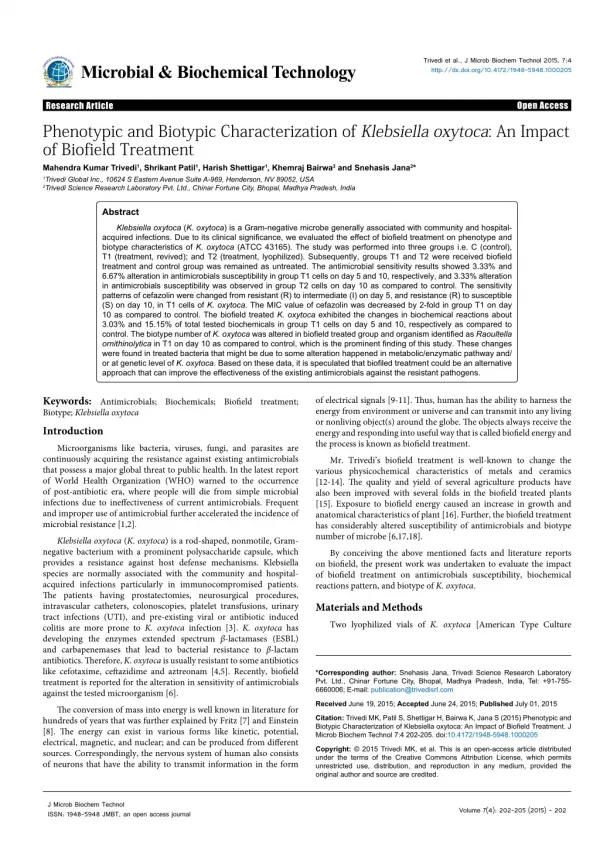Trivedi Effect - Phenotypic and Biotypic Characterization of Klebsiella oxytoca: An Impact of Biofield Treatment
Klebsiella oxytoca (K. oxytoca) is a Gram-negative microbe generally associated with community and hospitalacquired infections. Due to its clinical significance, we evaluated the effect of biofield treatment on phenotype and biotype characteristics of K. oxytoca (ATCC 43165). The study was performed into three groups i.e. C (control), T1 (treatment, revived); and T2 (treatment, lyophilized). Subsequently, groups T1 and T2 were received biofield treatment and control group was remained as untreated. The antimicrobial sensitivity results showed 3.33% and 6.67% alteration in antimicrobials susceptibility in group T1 cells on day 5 and 10, respectively, and 3.33% alteration in antimicrobials susceptibility was observed in group T2 cells on day 10 as compared to control. The sensitivity patterns of cefazolin were changed from resistant (R) to intermediate (I) on day 5, and resistance (R) to susceptible (S) on day 10, in T1 cells of K. oxytoca. The MIC value of cefazolin was decreased by 2-fold in group T1 on day 10 as compared to control. The biofield treated K. oxytoca exhibited the changes in biochemical reactions about 3.03% and 15.15% of total tested biochemicals in group T1 cells on day 5 and 10, respectively as compared to control. The biotype number of K. oxytoca was altered in biofield treated group and organism identified as Raoultella ornithinolytica in T1 on day 10 as compared to control, which is the prominent finding of this study. These changes were found in treated bacteria that might be due to some alteration happened in metabolic/enzymatic pathway and/ or at genetic level of K. oxytoca. Based on these data, it is speculated that biofiled treatment could be an alternative approach that can improve the effectiveness of the existing antimicrobials against the resistant pathogens. | Authors: Mahendra Trivedi, Dahryn Trivedi, Alice Branton, Gopal Nayak
★
★
★
★
★
53 views • 4 slides












